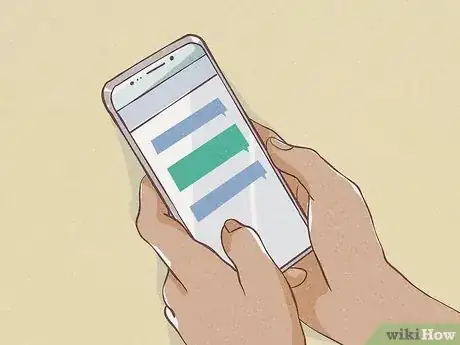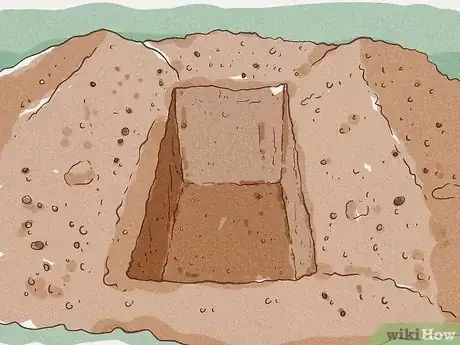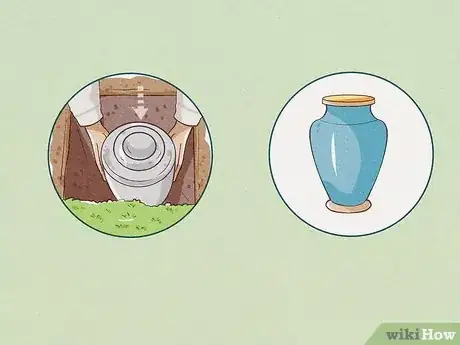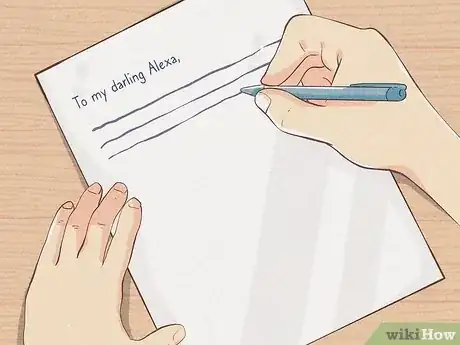This article was co-authored by David I. Jacobson. David I. Jacobson is the founder of Chicago Jewish Funerals, an independent Jewish owned funeral provider that evolved into two funeral homes in the Chicagoland area. With over 30 years of experience serving families, David is a leading expert on Kavod Hamet, the Jewish traditions of honoring and respecting the dead. David is an active funeral director that serves people planning and in need of funerals, lecturing to congregations, community groups, and schools extensively about the values of the Jewish funeral as well as the dying process and the value of one’s legacy.
There are 16 references cited in this article, which can be found at the bottom of the page.
wikiHow marks an article as reader-approved once it receives enough positive feedback. In this case, 80% of readers who voted found the article helpful, earning it our reader-approved status.
This article has been viewed 131,147 times.
Planning your own funeral may be an emotionally taxing process, but it will save your relatives a great deal of pain and worry in the long run. To start off you will want to brainstorm all of the possible details that you would like included in your service. Meet with a series of funeral directors to see how they can help you make your vision a reality. Pay close attention to costs and take careful notes to pass along to your relatives. Feel free to make alterations as your preferences change over the years.
Steps
Plan the Details of Your Memorial
-
1Make a list of your likes and dislikes. Take out a pen and some paper and begin brainstorming ideas regarding your funeral. Write down whatever comes to mind, at least at first. You might include things that you’ve seen done at other funerals that you thought worked well.[1]
- As you are sketching out ideas, pay attention to the intangibles as well. For example, what kinds of emotions do you want your funeral to create in others? Do you want your funeral to feel like a celebration or be a bit more somber in tone?
-
2Decide on a type of funeral. You will need to choose between a burial or cremation. With a burial, your body is interred in the ground either with or without embalming. With cremation, your body is cremated to ash and the remains are placed in a container of your choice.[2]
- You also have the option of a green burial, which is an environmentally conscious way of handling your deceased body. Go to the Green Burial Council website for additional information.[3]
Advertisement -
3Decide on a reception style. It is your choice whether to have a gathering before or after your funeral or none at all. You can have a service in the funeral home or a graveyard service at the cemetery. You can have a body viewing or wake before your funeral as well.
- This decision should be based, at least in part, on how comfortable you are with others viewing your body after death. You can always opt for a closed casket service as well.
- You might also choose to have a memorial service, which is a service where your body will not be present.[4]
-
4Choose a funeral home and memorial site. Go and interview several funeral directors. Read online reviews. Ask friends and relatives who have attended funerals if they have any recommendations. All funeral providers are required to provide you with a price list upon request.[5]
- It is sometimes hard to differentiate between a locally-owned home and a franchise or corporation. Make sure to ask about the funeral home’s history as you do research.
- You will also want to decide if you’d like to use one facility for the entire reception and funeral process or if you would like to only purchase part of a funeral package, a direct burial without a reception for example. Many people choose to have their funeral receptions held at a church or even at their home.
-
5Decide if you want a religious element. If you plan to follow religious conventions, you’ll want to reach out to your minister, priest, or rabbi to discuss the details. Some religious leaders charge fees for their services and you’ll want to ask about these now. You may also want to discuss using the church facility for part of the reception as well.
- Consider choosing a funeral home that specializes in funerals for people of your faith.[6]
-
6Select your eulogists. A eulogy is a short speech delivered at a funeral in which the speaker discussed the life of the deceased. It is not required to have eulogists and, if you choose to include speakers in your funeral, you will want to carefully select people who know you well. Ask them in advance if they would be comfortable saying a few words when the time comes.[7]
-
7Decide if you want to include readings. You can select a poem that is particularly meaningful to you. Or, perhaps a few sentences from your favorite author. Maybe even a few lines that you’ve written. Spoken song lyrics also often work well. Select the readings that you would like to include and consider who you would like to read them as well.[8]
- You might say, “I’ve started thinking about my funeral plans and, when the time comes, I would like for you to read a passage from Poe, if you are okay with that.”
-
8Select music for the service. Think about the type of atmosphere that you would like during your funeral. Would you prefer violins or flutes? Do you want music at the graveside or just at the church reception afterwards? Be aware that you can also opt for a combination of live and recorded music as well. Make notes regarding your wishes and discuss them with the funeral director.
-
9Choose photographs or other displays. Consider keeping a file on your computer containing possible memorial images to be used solely or as part of a general video during your funeral. You can also put these images on a zip drive and give it to a relative.
- With technology now you can get even more creative if you like and request that your tweets or blog entries are also incorporated in your funeral. They could be added on to the program or projected alongside photos of you.
- It is also a good idea to put a close friend in charge of alerting the online community (Facebook, Twitter) regarding your passing. You can script a message for them to send along or leave it up to them.[9]
-
10Consider your budget when planning. All of the personal touches that you add may have associated fees. And, regardless of whether you choose cremation or burial, your funeral home will likely add a set of standard fees onto your final bill. These fees can include the cost of obtaining death certificates or even housing your body. Keeping in mind how much you can reasonably spend will help you to make realistic choices.[10]
- For example, you can sometimes opt out of embalming and choose refrigeration instead, which can decrease the cost.[11]
-
11Look into prepayment. Many funeral homes will accept payment for your service in advance. Ask the funeral directors about their policies in this area. Some states require that these monies go into a trust of some sort for security, whereas other locations offer very little in the way of security.[12]
Pre-Planning Your Burial
-
1Choose a casket. Ask to see a written casket price list at each funeral home. Then, ask to see the actual caskets on display. Compare the list to the display models. If you don’t see the particular model that you are interested in, request a visual of some sort. Caskets can vary widely in terms of materials and cost, so it is best to shop around a bit.[13]
- Some caskets are made of wood while others are constructed from fiberglass, plastic, fiberboard, cardboard, or metal. The interiors vary widely as well. Some caskets have basic fabric patterns while others display a velvet or silk.
- A standard casket will cost you upwards of $2,000 with some specialty ones selling for over $10,000.[14]
- The Federal Trade Commission (FTC) guarantees that your funeral home will allow you to use any previously purchased casket for your funeral. So, don’t feel pressured to purchase everything at one time in one place.
-
2Select a vault or liner. Most cemeteries make you purchase a liner of some sort. A quality liner will keep the grave from sinking and caving in. You can often buy a liner at the funeral home, but you should feel free to shop around as well for the best price. Be aware that the liners are often not customizable.[15]
-
3Purchase a burial plot. Consider whether you would like a single-depth space (to fit one person) or a double-depth space (designed for two). You can also investigate getting a spot within a family plot or starting a family plot yourself. Expect to pay somewhere between $200-$25,000 for a single-depth plot.[16]
- You will also want to ask the funeral home about the cost of grave digging and cemetery care as well. Many cemeteries will keep an account in place for long-term care.
-
4Arrange for a headstone or grave marker. Most cemeteries will have regulations regarding the types of markers they allow. Ask about these restrictions and then start to shop around. A traditional granite headstone can cost you upwards of $1,000. Expect to pay a premium for additional customized options or expensive stone types.[17]
- You may also have to pay marker setting fees and foundation fees.
Pre-Planning Your Cremation
-
1Know your cremation options. A cremation can cost in the hundreds or thousands of dollars depending on the choices that you make. You will want to decide whether or not to have a viewing of your body beforehand and what type of ceremony to have for the interment process. Do you want your cremated remains to be buried, kept in an urn, or scattered?[18]
- Direct cremation refers to the process of cremating the body without a viewing or gathering beforehand.
- If you would like a viewing beforehand, you may want to look into the option of renting a casket for your body. If you opt for a cremation your funeral director will provide a container that will hold the body secure during the cremation process itself.[19]
-
2Select an urn. You will want to designate a container to hold your ashes post-cremation. You can shop around or use a family item as an urn. Or, you can look for another container or box that suits your personality. The container itself can be placed in a cemetery or taken home by a relative or someone else of your choice.[20]
-
3Investigate regulations regarding the scattering of ashes. Many people like the idea of having their ashes scattered but you will want to leave very specific instructions behind discussing how to go about it. You will want to receive advance permission to have your ashes scattered on private or government-owned property. You will also want to make sure that this is your final choice as it is irrevocable once completed.[21]
- Some cemeteries set aside a particular area where mourners can scatter ashes as they so choose. Ask the funeral directors that you meet with if they provide such a service.
- Note that if you decide to scatter ashes in the ocean you must be a minimum of three nautical miles offshore. For more information contact your funeral director or the U.S. Environmental Protection Agency (EPA).
Communicating Your Wishes to Others
-
1Write your own obituary. This can be a difficult task even for those people close to you, so it is helpful to at least start the process off. You can create an outline stating the major points that you would like covered. Or, you can write out an entire draft and provide a list of the places that you would like it sent to.
-
2Compose personal letters to family and friends. It is always a nice gesture to write a few, quick words (or even a more lengthy note) to those people closest to you. These letters can be designed to be opened right after your death, as opposed to the weeks it may take to process your will and related effects. Be honest and sincere in these letters and use them as an opportunity to say an extended good-bye.
- It is a good idea to update these letters every so often. You can ask your lawyer to hold onto them for you or you can give this task to someone you trust.
-
3Make a packet for your relatives. Go through all of your documents and notes and make copies. Give one copy to your attorney and a few others to family members who you trust. This will allow them to act on your preferences without delay. Many funeral homes will also file your plans away for you, usually free-of-charge.[22]
- Avoid putting your only plan copy into a safe deposit box as it could be difficult for your family members to access it quickly. The same goes for a will, which can be read days after a funeral.[23]
- The Funeral Consumers Alliance has a funeral planner available for purchase ($15) as well. You can use this binder to contain and carry all of your assorted paperwork too. Some companies also offer funeral planning via a website subscription, such as My Wonderful Life.
Expert Q&A
-
QuestionIs it normal to plan your own funeral?
 David I. JacobsonDavid I. Jacobson is the founder of Chicago Jewish Funerals, an independent Jewish owned funeral provider that evolved into two funeral homes in the Chicagoland area. With over 30 years of experience serving families, David is a leading expert on Kavod Hamet, the Jewish traditions of honoring and respecting the dead. David is an active funeral director that serves people planning and in need of funerals, lecturing to congregations, community groups, and schools extensively about the values of the Jewish funeral as well as the dying process and the value of one’s legacy.
David I. JacobsonDavid I. Jacobson is the founder of Chicago Jewish Funerals, an independent Jewish owned funeral provider that evolved into two funeral homes in the Chicagoland area. With over 30 years of experience serving families, David is a leading expert on Kavod Hamet, the Jewish traditions of honoring and respecting the dead. David is an active funeral director that serves people planning and in need of funerals, lecturing to congregations, community groups, and schools extensively about the values of the Jewish funeral as well as the dying process and the value of one’s legacy.
Funeral Home Director Yes, but you don't have to do it alone. A good funeral director will help you decide on the options that fit your budget as well as your final wishes. If you feel like someone is pressuring you into buying the most expensive options, you might consider choosing another funeral home.
Yes, but you don't have to do it alone. A good funeral director will help you decide on the options that fit your budget as well as your final wishes. If you feel like someone is pressuring you into buying the most expensive options, you might consider choosing another funeral home. -
QuestionHow do you plan your own funeral?
 David I. JacobsonDavid I. Jacobson is the founder of Chicago Jewish Funerals, an independent Jewish owned funeral provider that evolved into two funeral homes in the Chicagoland area. With over 30 years of experience serving families, David is a leading expert on Kavod Hamet, the Jewish traditions of honoring and respecting the dead. David is an active funeral director that serves people planning and in need of funerals, lecturing to congregations, community groups, and schools extensively about the values of the Jewish funeral as well as the dying process and the value of one’s legacy.
David I. JacobsonDavid I. Jacobson is the founder of Chicago Jewish Funerals, an independent Jewish owned funeral provider that evolved into two funeral homes in the Chicagoland area. With over 30 years of experience serving families, David is a leading expert on Kavod Hamet, the Jewish traditions of honoring and respecting the dead. David is an active funeral director that serves people planning and in need of funerals, lecturing to congregations, community groups, and schools extensively about the values of the Jewish funeral as well as the dying process and the value of one’s legacy.
Funeral Home Director When you're planning your funeral, the most important things to consider are whether there are any religious traditions that are important to you and where you want to be buried. When you're making the arrangements, also consider who will be your healthcare power of attorney, and how you'll distribute your belongings after you're gone.
When you're planning your funeral, the most important things to consider are whether there are any religious traditions that are important to you and where you want to be buried. When you're making the arrangements, also consider who will be your healthcare power of attorney, and how you'll distribute your belongings after you're gone. -
QuestionHow can I use human ashes creativity?
 Community AnswerYou can have them made into a diamond or shot into space.
Community AnswerYou can have them made into a diamond or shot into space.
Warnings
- Make sure to discuss your wishes in detail with your family. This will lessen the possibility of disagreements or misinterpretations of your final plans.[29]⧼thumbs_response⧽
References
- ↑ http://www.kiplinger.com/article/retirement/T021-C000-S002-how-to-plan-your-own-funeral.html
- ↑ https://www.consumer.ftc.gov/articles/0302-types-funerals
- ↑ http://greenburialcouncil.org/
- ↑ David I. Jacobson. Funeral Home Director. Expert Interview. 14 July 2020.
- ↑ https://www.consumer.ftc.gov/articles/0303-choosing-funeral-provider
- ↑ David I. Jacobson. Funeral Home Director. Expert Interview. 14 July 2020.
- ↑ http://www.esquire.com/lifestyle/how-to/a735/how-to-give-a-eulogy/
- ↑ http://blog.ioaging.org/end-of-life/fond-farewell-guide-to-planning-your-own-funeral/
- ↑ http://www.irishtimes.com/life-and-style/planning-your-own-funeral-is-the-only-way-to-ensure-it-will-have-your-personal-stamp-1.1423248
- ↑ https://www.consumer.ftc.gov/articles/0301-funeral-costs-and-pricing-checklist
- ↑ https://www.consumer.ftc.gov/articles/0300-ftc-funeral-rule
- ↑ https://www.consumer.ftc.gov/articles/0305-planning-your-own-funeral
- ↑ https://www.consumer.ftc.gov/articles/0300-ftc-funeral-rule
- ↑ https://www.consumer.ftc.gov/articles/0301-funeral-costs-and-pricing-checklist
- ↑ https://www.consumer.ftc.gov/articles/0300-ftc-funeral-rule
- ↑ http://www.nfda.org/consumer-resources/planning-a-funeral/burial-options
- ↑ https://www.consumer.ftc.gov/articles/0304-buying-cemetery-site
- ↑ http://www.nfda.org/consumer-resources/planning-a-funeral/cremation-options
- ↑ https://www.consumer.ftc.gov/articles/0301-funeral-costs-and-pricing-checklist
- ↑ https://www.consumer.ftc.gov/articles/0300-ftc-funeral-rule
- ↑ http://www.nfda.org/consumer-resources/planning-a-funeral/service-options-frequently-asked-questions
- ↑ http://www.kiplinger.com/article/retirement/T021-C000-S002-how-to-plan-your-own-funeral.html
- ↑ https://www.consumer.ftc.gov/articles/0305-planning-your-own-funeral
- ↑ https://www.consumer.ftc.gov/articles/0304-buying-cemetery-site
- ↑ https://www.consumer.ftc.gov/articles/0306-funeral-terms-and-contact-information
- ↑ http://www.kiplinger.com/article/retirement/T021-C000-S002-how-to-plan-your-own-funeral.html
- ↑ http://www.irishtimes.com/life-and-style/planning-your-own-funeral-is-the-only-way-to-ensure-it-will-have-your-personal-stamp-1.1423248
- ↑ David I. Jacobson. Funeral Home Director. Expert Interview. 14 July 2020.
- ↑ http://www.kiplinger.com/article/retirement/T021-C000-S002-how-to-plan-your-own-funeral.html
About This Article
It can be emotional to plan your own funeral, but you’ll save your relatives a lot of effort and stress. You’ll want to decide if you’d prefer to be buried or cremated and where it’ll take place. You can also choose readings, music, and suggest loved ones to write your eulogies. Look for a casket or urn you’re happy with and choose a burial plot where you’d like to rest. Many funeral homes will accept advance payments, but if you’re not paying for your funeral yourself, keep your budget in mind when choosing the funeral details. Write your wishes clearly in a document and give copies to your attorney and family members so they can carry it out. For more tips, including how to write your own obituary, read on.



















































































